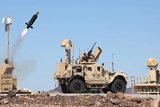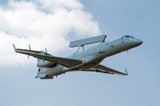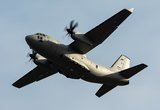Dubai Airshow 2023: How the MQ-9 Reaper UAS came to rule the skies
The long-endurance MQ-9A Reaper UAS has been in service with the US Air Force, US Navy, US Department of Homeland Security and a number of European armed forces. (Photo: US Air Force/DoD)
In the realm of modern warfare and intelligence, surveillance and reconnaissance (ISR), the General Atomics Aeronautical Systems Inc (GA-ASI) MQ-9A UAS stands as a prime example of technological innovation and strategic capability.
Multiple US Reapers are currently circling above Gaza in response to Israeli strikes and ongoing military operations, according to information provided by US officials to Reuters. These aerial missions are said to be a component of a broader initiative aimed at aiding the identification and location of hostages.
In this backgrounder, Shephard embarks on an exploration of the MQ-9A Reaper's evolution, spanning from its inception to development, and delving into its influential role in modern military operations. Against the backdrop of the recent Gaza-Israel war, the story will also unravel the specific contributions of the MQ-9 in this conflict.
Related Articles
F-35 Lightning II: key facts about the world's most popular fifth-generation fighter jet
Why the F-16 fighter jet remains a force to be reckoned with (updated 2025)
How does the Reaper improve on the Predator?
The MQ-9A Reaper has its roots in the earlier MQ-1 Predator, another UAS developed by GA-ASI. Introduced in the 1990s, the Predator played a pivotal role in reconnaissance and target acquisition. The need for a more potent and versatile platform, however, led to the inception of the MQ-9A programme.
In response to the changing demands of modern warfare, GA-ASI embarked on a design evolution that led to the birth of the MQ-9A Reaper. This new UAS combined the capabilities of its predecessor with enhanced performance, payload capacity and endurance.
The long-endurance UAV has been in service with the US Air Force, US Navy, US Department of Homeland Security and several European armed forces.
The platform had surpassed two million flight hours in support of global customers by March 2022.
The Reaper, equipped with modern sensors, communication systems and weapon payloads, set new standards for UAS capabilities, offering a multi-mission, long-endurance platform that could perform strike, ISR, and even signals intelligence (SIGINT) missions.
The Reaper's controversial deployment and its current role in Gaza?
The persistent presence of the MQ-9A Reaper has proven indispensable in tracking and neutralizing high-value targets, disrupting insurgent networks, and contributing significantly to the 'War on Terror' in the Middle East, particularly in Afghanistan, Iraq and other terrorism-affected areas.
The drone's versatility extends beyond military applications, enhancing border surveillance and being deployed for disaster assessment, search and rescue missions, and monitoring natural disasters.
In the context of the recent Gaza-Israel war, triggered by Hamas' attack on 7 October, the MQ-9A Reaper's role has expanded to include aiding in hostage-location efforts. Flights over Gaza, reportedly unarmed and equipped with advanced onboard sensors, have focused on searching for hostages with at least six drones deployed.
The aircraft's high-powered cameras, capable of spotting heat signatures and operating in low-light conditions, have been crucial in this mission. The flights over Gaza have marked a historic moment, representing the first reported instance of US drones operating over the territory.
Despite its contributions, the use of drones, including the MQ-9A Reaper, has faced criticism in the Middle East. Concerns include civilian casualties, collateral damage, lack of accountability and transparency due to the remote-controlled nature of the platform, as well as issues related to sovereignty and an over-reliance on technology in conflict situations.
The Reaper's endurance, payload versatility and precision underscore its position as a transformative asset in shaping the outcomes of conflicts globally, while simultaneously raising ethical and operational considerations in contemporary warfare.
What missions can the Reaper perform?
The MQ-9A Reaper boasts a suite of advanced features that contribute to its effectiveness on the modern battlefield. It is powered by a 940shp Honeywell TPE331-10 turboprop engine and can reach a maximum airspeed of 240kt at sea level and climb to a maximum altitude of 50,000ft.
With an endurance of up to 27 hours, the Reaper can remain airborne for extended periods, providing persistent surveillance and strike capabilities over large areas.
This endurance can be stretched to 29 hours with the use of an extended-range kit. The UAS can be disassembled between missions and loaded into a single container for deployment worldwide. The entire system can be transported in the C-130 Hercules or larger aircraft.
The drone’s internal and external payload capacity allows it to carry a variety of sensors, cameras, communication devices and munitions, making it a versatile platform adaptable to different mission profiles.
Equipped with high-resolution cameras, infrared sensors, and synthetic aperture radar, the Reaper provides real-time situational awareness and intelligence to ground commanders. Communication systems enable seamless data transmission between the platform and ground control stations, facilitating remote operation and coordination with other assets.
The Reaper's ability to carry and employ guided munitions, including Hellfire missiles, grants it the capability to accurately engage targets with minimal collateral damage. It is fair to say, the MQ-9A's deployment has revolutionised aspects of modern warfare and intelligence operations.
In November 2017, GA-ASI announced that the Reaper had demonstrated its capability to remotely detect and track submerged contacts, such as submarines, during a US naval exercise.
The MQ-9 had a flyaway unit cost of $22.25 million in FY2022.
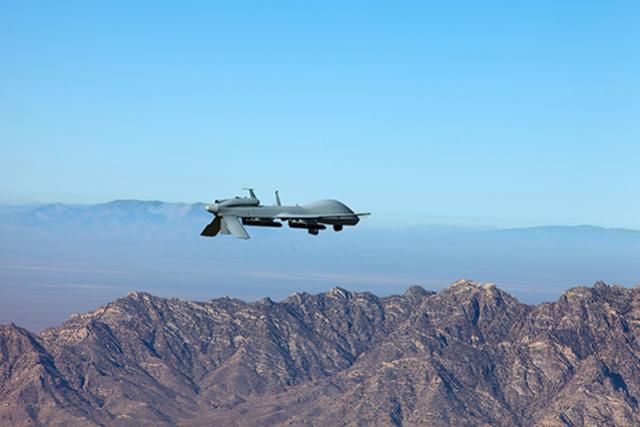 | 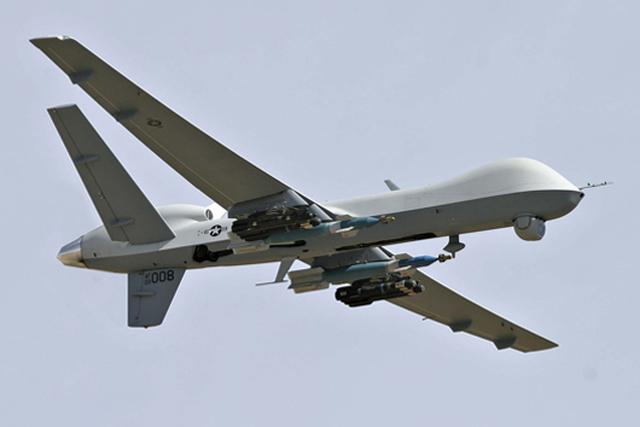 | 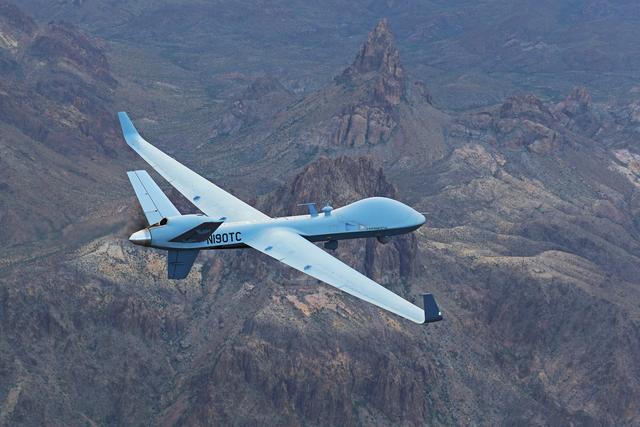 | |
| Title | Gray Eagle | MQ-9A Reaper | MQ-9B SkyGuardian / SeaGuardian |
|---|---|---|---|
| Categories | Uncrewed aerial systems, Uncrewed aerial systems | Uncrewed aerial systems, Uncrewed aerial systems | Uncrewed aerial systems, Uncrewed aerial systems |
| Subcategories | Military UAS - fixed-wing, Military UAS - MALE | Military UAS - fixed-wing, Military UAS - MALE | Military UAS - fixed-wing, Military UAS - MALE |
| Suppliers | General Atomics Aeronautical Systems (GA-ASI) | General Atomics Aeronautical Systems (GA-ASI) | General Atomics Aeronautical Systems (GA-ASI) |
| Region | NORTH AMERICA | NORTH AMERICA | NORTH AMERICA |
| Manufacturer Country | USA | USA | USA |
| Total Ordered | 165 | 398 | 32 |
| Total Delivered | 165 | 332 | 1 |
| Unit Cost (US$) | 11190000.00 | 25044000.00 | 37800000.00 |
| First Delivery Date | 2009 | 2003 | 2023 |
| Out Of Service Date | 2037 | U | U |
| Status | Out of production | In production | In production |
| Entry URL | https://plus.shephardmedia.com... | https://plus.shephardmedia.com... | https://plus.shephardmedia.com... |
| Length 1 (overall) | 9m | 11m | 12m |
| Width 1 (overall) | 17m | 20.1m | 24m |
| Height 1 (overall) | 2.1m | 3.81m | U |
| Weight 1 (overall) | 1,633kg | 5,307kg | 5,670kg |
| Weight 3 (sub-assembly/payload) | 488kg | 386kg | 2,721kg |
| Speed 1 (maximum) | 167kt | 240kt | 210kt |
| Speed 3 (cruise) | 134.99kt | 180kt | 180kt |
| Range 1 (overall travel) | 400km | 8,519km | 11,112km |
| Effective Altitude | 29,000ft | 50,000ft | 40,000ft |
| Endurance 1 (time) | 25h | 27h | 40h |
The MQ-9A Reaper and similar platforms. (Source: Shephard Defence Insight)
✅ This data has been verified by the same team that brings you Defence Insight. Want to learn more?
Recent Reaper news and announcements
GA-ASI has made a noteworthy proposal to Ukraine, offering two MQ-9 Reaper aircraft along with spare parts, technical support and satellite data transfer capabilities. This enhanced offer seeks to deepen defence cooperation, with the deal's approval awaiting a decision from the US DoD.
Simultaneously, the Dutch Mod has unveiled plans to deploy three MQ-9 Reaper drones in Romania—a historic move as it would marks the first time the Netherlands will deploy unmanned reconnaissance aircraft beyond its borders.
Aligned with NATO's commitment to fortify its eastern flank, these unarmed MQ-9s will play a crucial role in intelligence-gathering operations, emphasising collaboration within NATO while allowing the Netherlands to retain control over intelligence processing.
Looking toward the future, the head of Air Force Special Operations Command, Lt Gen Tony Bauernfeind, envisioned a new role for MQ-9 Reaper drones. They are proposed to act as 'capital ships,' launching platforms for smaller UASs that could establish extensive sensor grids and communication pathways to support joint force operations.
Additionally, in response to the recent coup in Niger, the US and France have engaged in a critical reassessment of their counter-terrorism and surveillance drone bases. General James Hecker, commander of US Air Forces in Europe and Africa, has confirmed ongoing discussions about potential alternative locations.
What other GA-ASI UAS are in service?
MQ-9B
The MQ-9B is an upgraded variant of the MQ-9A designed for ISR missions.
The MQ-9B is available in two variants, the SkyGuardian and SeaGuardian. These have mostly identical airframes, with specific payloads outfitting the SkyGuardian for over-land operations and the SeaGuardian for maritime missions.
A short take-off and landing (STOL) kit for the platform is currently under development.
MQ-1C Gray Eagle
This fixed-wing UAS was designed to fulfil a requirement by the US Army for an extended-range, multipurpose UAS. It is based on the MQ-9A airframe, and GA-ASI announced that the family of Gray Eagle UAVs had surpassed one million flight hours during US Army flight operations on 16 March 2021.
The improved Gray Eagle Extended Range (ER) variant has replaced the Grey Eagle on the production lines.
The MQ-1C was designed to fulfil a requirement by the US Army for an extended-range, multipurpose UAS.
This article was originally published on 11 September 2023 as 'The evolution of airborne dominance: all you need to know about the MQ-9 Reaper UAS'.
Liked this background story? For more in-depth data and information, request a demo on our Defence Insight market intelligence tool.
Shephard's Dubai Airshow 2023 coverage is sponsored by:

Related Equipment in Defence Insight
More from Dubai Airshow 2023 | View all news
-
![South Korea and Boeing to jointly research long-endurance aerial UAVs]()
South Korea and Boeing to jointly research long-endurance aerial UAVs
Boeing and South Korea have solidified plans that would see Boeing UAV design and technology capabilities implemented locally by South Korean companies.
-
![Ukraine fields 5,000 homegrown drones amid Iran's debut of advanced Shahed-238 UAV]()
Ukraine fields 5,000 homegrown drones amid Iran's debut of advanced Shahed-238 UAV
Amid escalating tensions and technological advancements in drone warfare, Ukraine has reinforced its front lines with a delivery of 5,000 indigenous drones, paralleled by Iran's revelation of the new jet-powered Shahed-238.
-
![Brazil receives first fully operational upgraded E-99M AEW&C]()
Brazil receives first fully operational upgraded E-99M AEW&C
The updated E-99M aircraft features an updated Erieye Radar and C2 systems, as well as new EW and Identification, friend or foe (IFF) systems.
-
![Slovenia secures second C-27J Spartan tactical transport aircraft]()
Slovenia secures second C-27J Spartan tactical transport aircraft
A new agreement between Leonardo, the Italian government and Slovenia has marked the procurement of a second C-27J Spartan medium tactical transport aircraft for Slovenia, following an earlier deal signed in March 2022.
-
![Boeing shifts towards low-rate MH-139A Grey Wolf production]()
Boeing shifts towards low-rate MH-139A Grey Wolf production
Boeing's progress in the MH-139A Grey Wolf helicopter programme have marked a milestone in the transition toward low-rate initial production, following the delivery of the final test aircraft to the US Air Force.
-
![Boeing and Red 6 make moves on airborne augmented reality training]()
Boeing and Red 6 make moves on airborne augmented reality training
Boeing and augmented reality training specialist Red 6 have achieved notable progress in integrating advanced technology into training aircraft.







